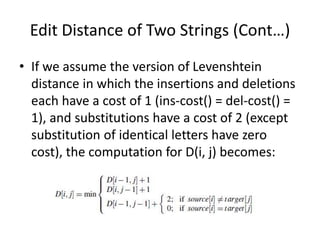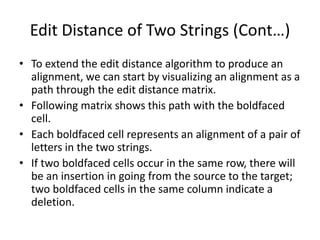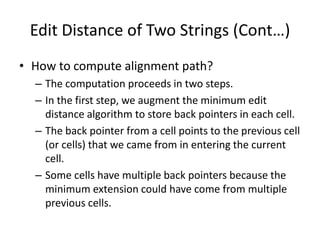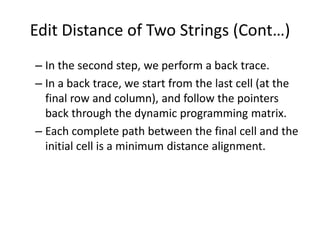The document discusses minimum edit distance and how it can be used to quantify the similarity between two strings. Minimum edit distance is defined as the minimum number of editing operations like insertion, deletion, substitution needed to transform one string into another. Levenshtein distance assigns a cost of 1 to each insertion, deletion, or substitution, and calculates the minimum edits between two strings using dynamic programming to build up solutions from sub-problems. The algorithm can also be modified to produce an alignment between the strings by storing back pointers and doing a backtrace.








![Edit Distance of Two Strings
• Let’s first define the minimum edit distance
between two strings.
• Given two strings, the source string X of length
n, and target string Y of length m, we’ll define
D(i, j) as the edit distance between X[1::i] and
Y[1:: j], i.e., the first i characters of X and the
first j characters of Y.
• The edit distance between X and Y is thus
D(n,m).](https://image.slidesharecdn.com/nlp07-180507132953/85/NLP_KASHK-Minimum-Edit-Distance-9-320.jpg)











